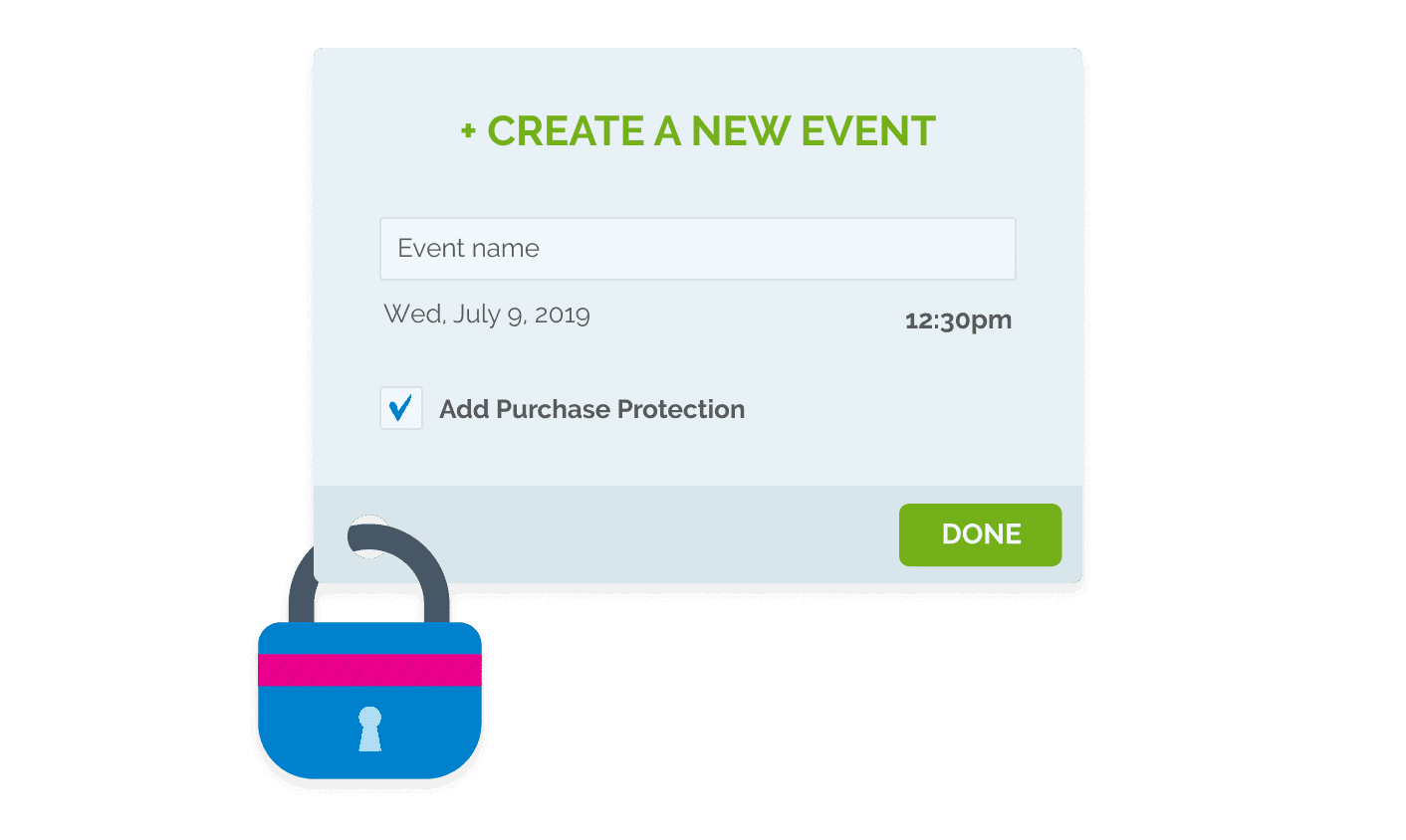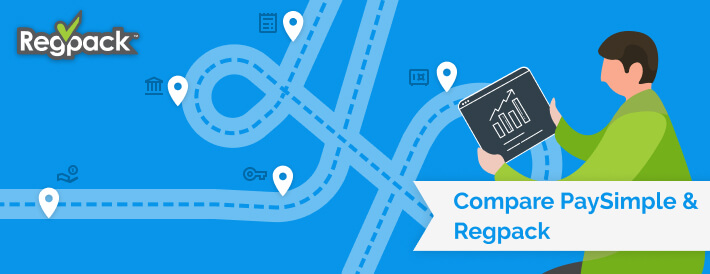Are you looking for an online payment software to collect and manage payments on your website? Regpack and PaySimple are two you should consider!
Both PaySimple and Regpack can create an online payment experience on your website so you can accept payments online, automate your billing processes and manage your client base with an intuitive back end portal.
It’s important to provide payment options for customers on your website, and both PaySimple and Regpack offer professional ways to manage your cash flow online.
Below we’ll compare two of the best online payment software options on the market today and how they stack up.
Top Payment Software Features

Both PaySimple and Regpack allow you to collect credit cards, debit cards, and ACH on your website.
Additionally, both allow you to put users on payment plans, manage customers with back end payment reporting, and create online invoices.
A few ways each stand out
PaySimple offers recurring billing and a direct Quickbooks integration as well as a Constant Contact and Mailchimp integration for email communication and marketing.
Regpack creates customized autobill plans that allow users to pay on a weekly or monthly schedule for as long as you need. Custom payment reporting allows for easy uploads into Quickbooks and other online billing services. Regpack also has a built in email communication tool that allows for filtering for users based on any data criteria, and sending customized messaging from within the platform.
Payment Forms On Your Website

Regpack allows you to embed a customized payment form on your website – anywhere you’d like. You decide what information you want to collect from the user, including orders and discounts, and the system will calculate the amount due and enroll users in the correct automatic billing plan.
Regpack isn’t just payments – it’s the full onboarding experience for your users and your business. Collect data, trigger custom payments and payment plans, with a full suite of reporting tools to manage customers AND payments. Regpack also has built in tools to list your offerings, including sessions, events, and merchandise for users to select and enroll.
PaySimple offers payment reporting but is a payment integration tool with other software. It is one piece of the puzzle for managing your business.
PaySimple does have payment form templates and appointment scheduling for your business. They also have a POS solution.
Regpack embeds all forms and payment processes on YOUR website. It can also host it for clients that don’t have a website.
PaySimple requires integration with your existing software app.
Pricing Comparison

Both PaySimple and Regpack list their pricing on their website.
PaySimple has credit card processing as low as 2.49% with additional per transaction and monthly fees. ACH starts at $.60 + 20% processing.
In addition to payment processing costs, PaySimple charges $60 per month for use of the platform.
Regpack works a bit differently. There is a monthly charge for the number of full-access admins, starting at $89 per month. This includes set-up, access to all data and features including unlimited form creation, unlimited automatic billing plans, unlimited reports, and unlimited email communication.
Processing fees vary according to the amount you process, but ACH rates begin at 1.5%. Regpack offers fixed and blended processing rates – so you can get the best deal that works for your business’ processing needs.
Payment Protection
Regpack is the only software that offers Purchase Protection – a plan that users can purchase to protect their purchase in the event of illness or death that prevents the user from using a purchase service.

Plans are paid by the users, not the business, and protect the investment businesses make in their users in case of cancellation.
Which payment software should I choose?
The best place to start is contacting both companies and requesting a free demo. This allows you to speak with someone directly about your needs and see if the software can handle it.
You’ll also get a better idea of what the front end experience will be like for your clients, and how the back end experience will look for you and your team. This includes the reports you can generate, and how to customize the data and payment experience.




















